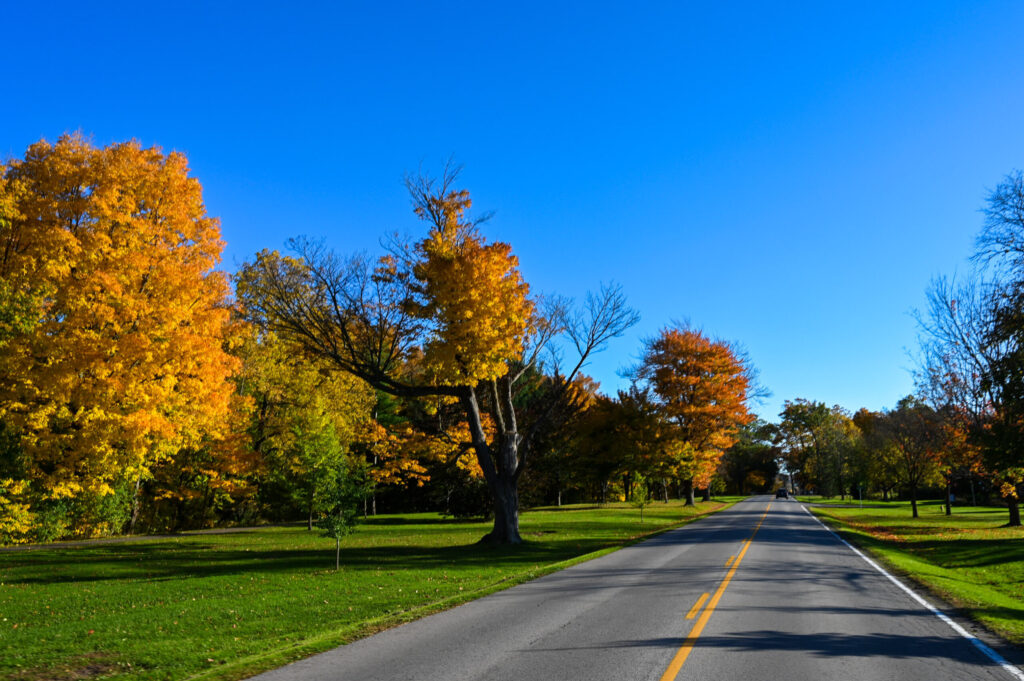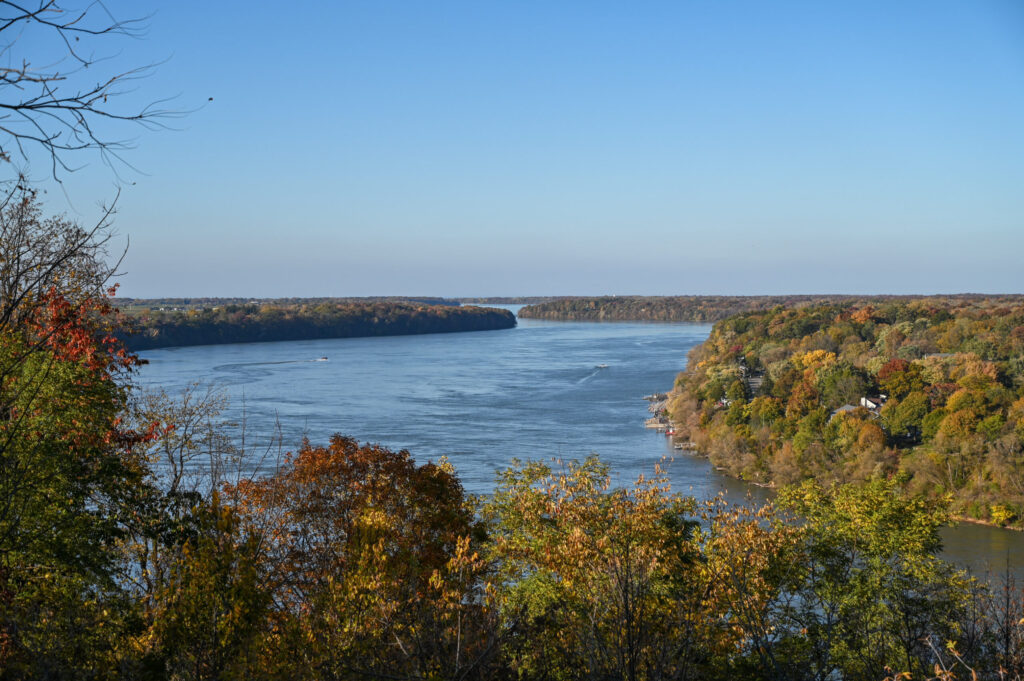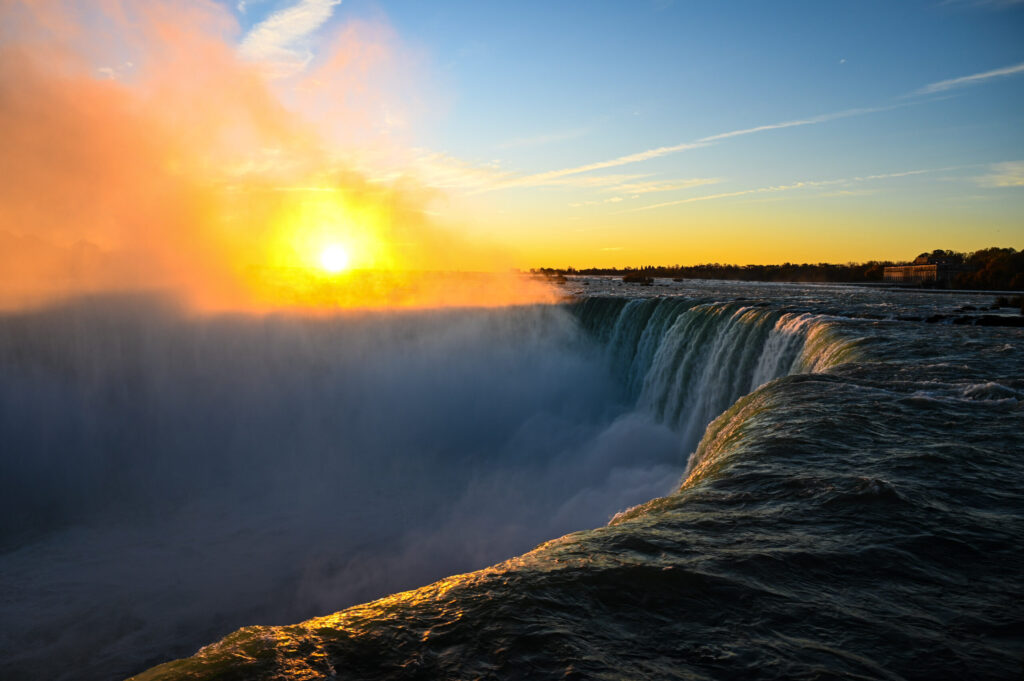Canada – East
Arrival in Canada
After leaving home, we get on the plane. About eight hours later we arrive in Halifax. The entry is easy and we can receive our rental car. After moving into a hotel room, we explore the nightlife in Halifax and find it in a cosy pub.
Until our Land Rover arrives in Halifax, we explore Halifax and its surroundings. The coastal road to Peggy’s Cove (Canada’s most photographed lighthouse) and Lunenburg, a pretty town that has been a UNESCO World Heritage Site since 1995, is quite beautiful. Also worthwhile is the visit to the memorial to Swissair Flight 111, which is located in this area.
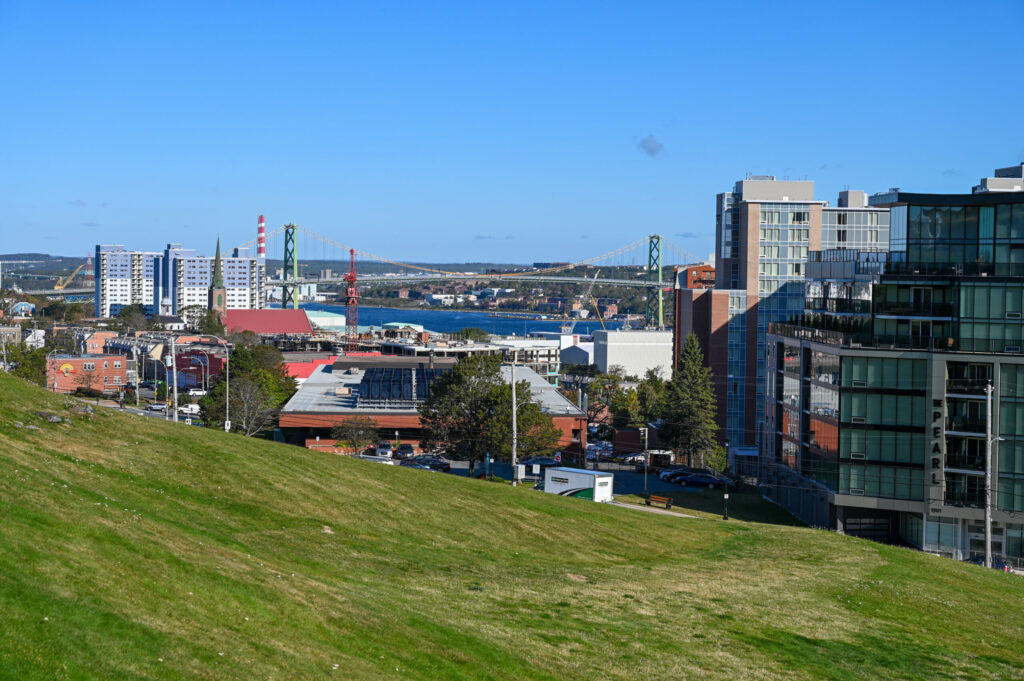
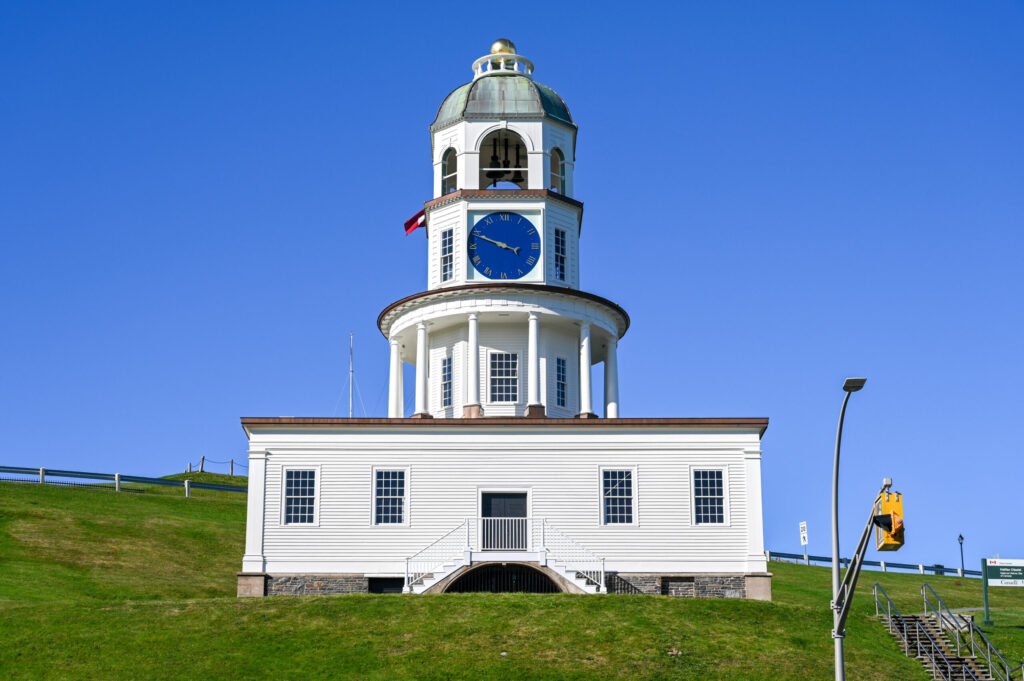
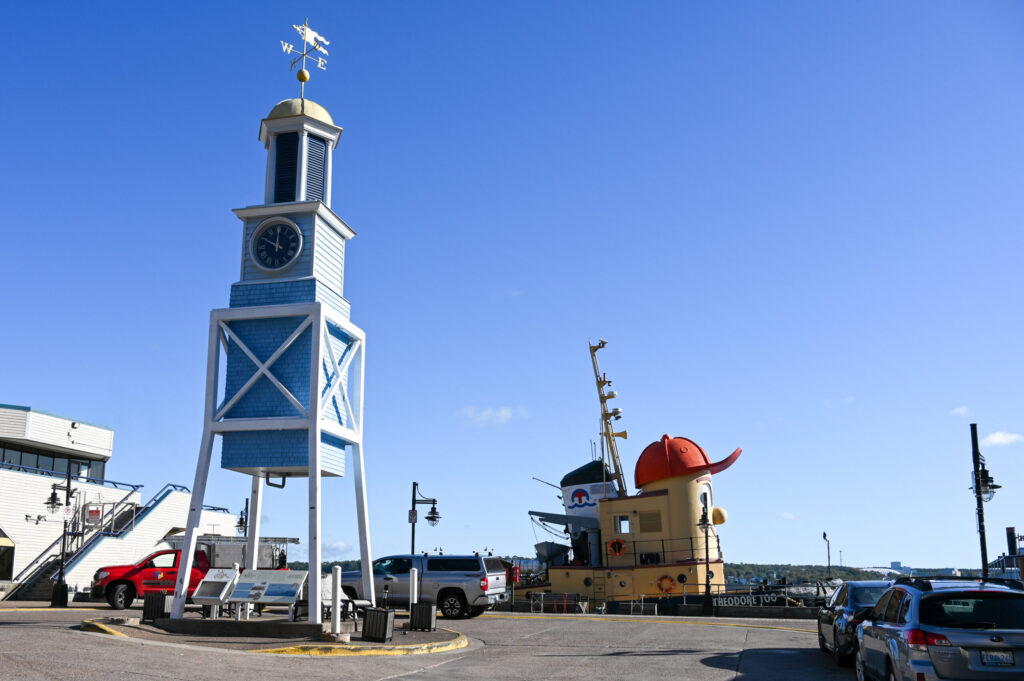
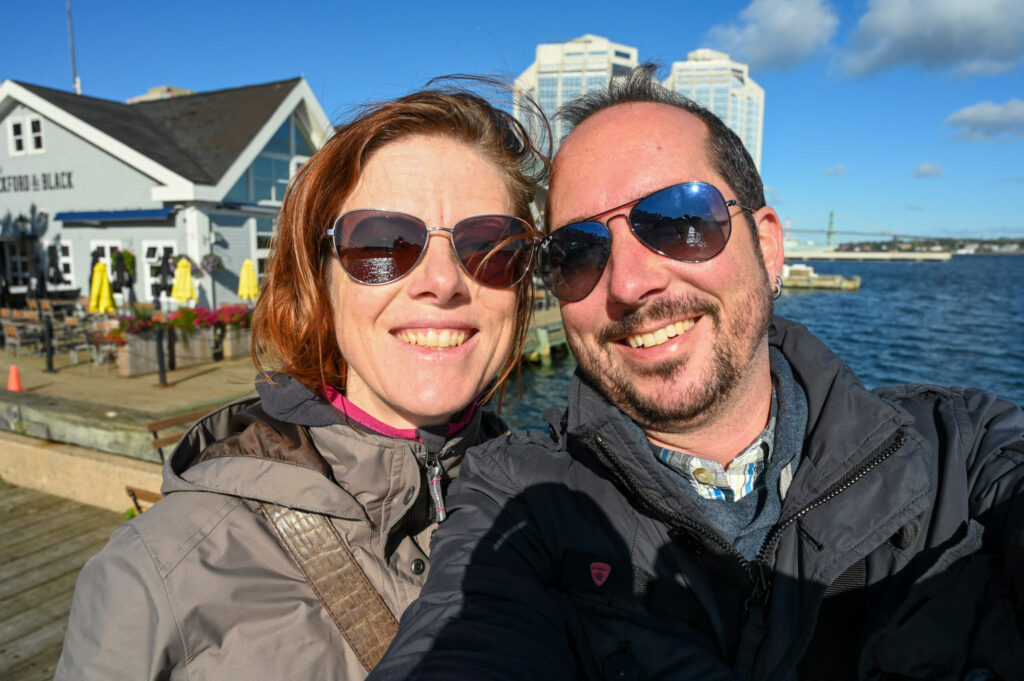
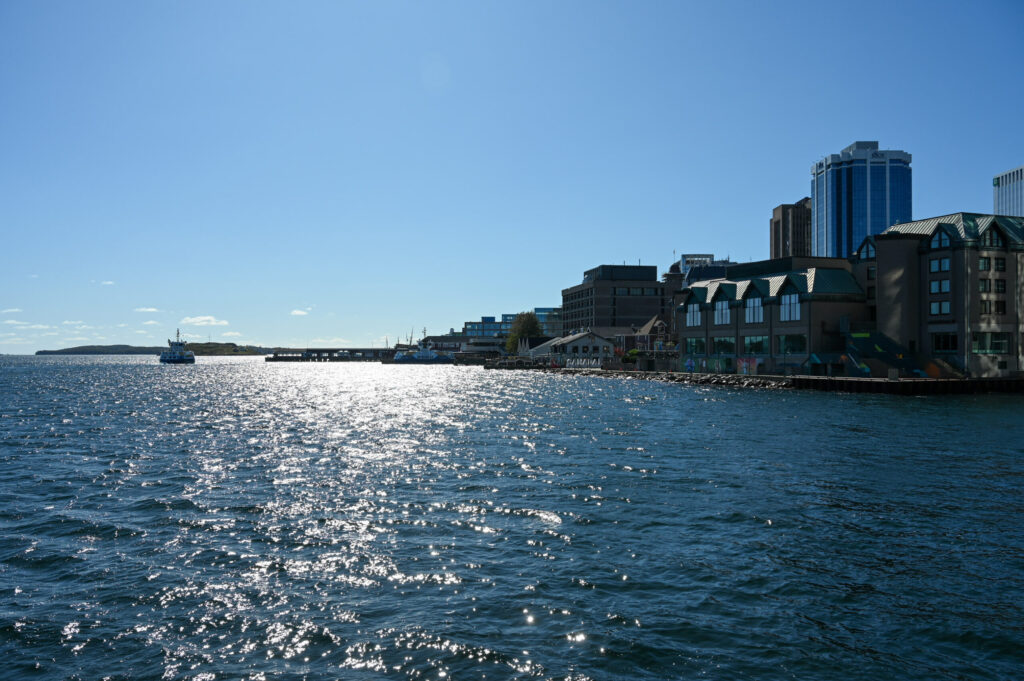
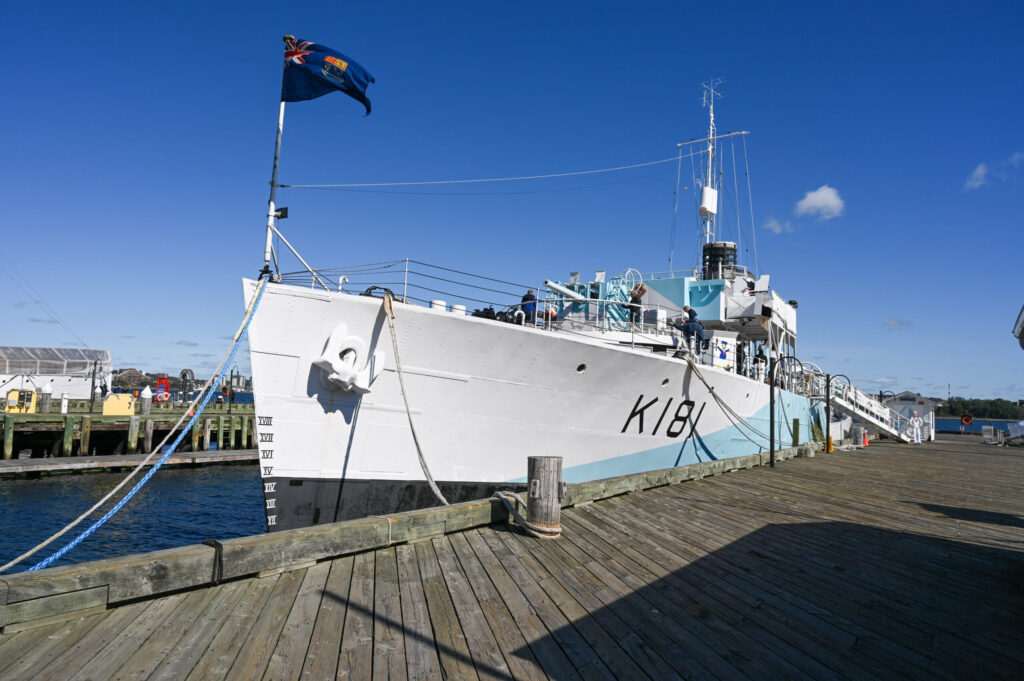


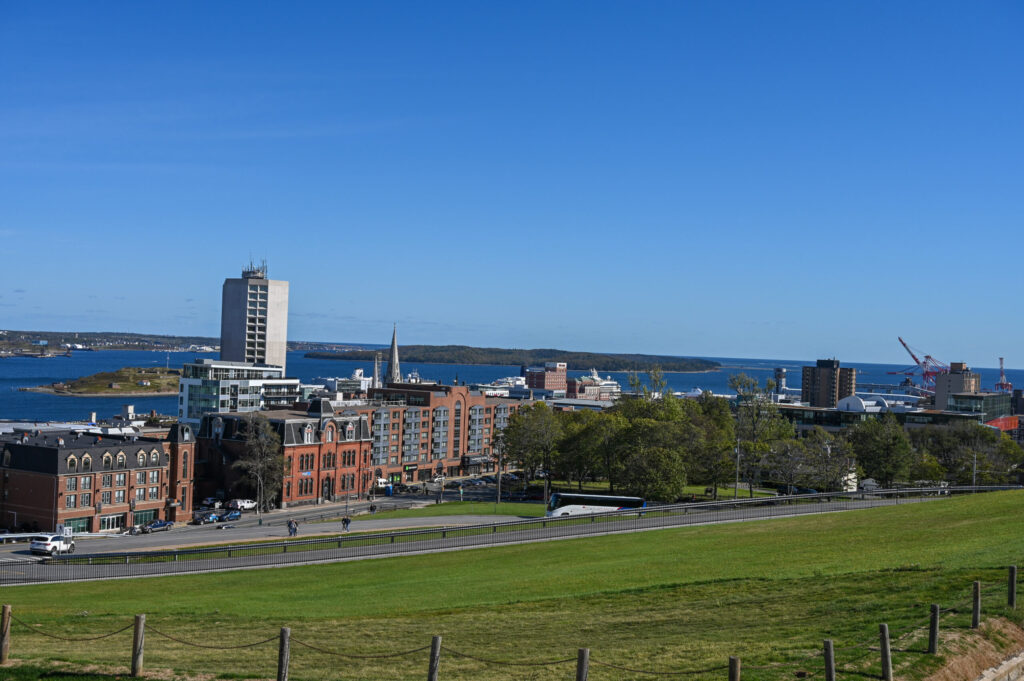

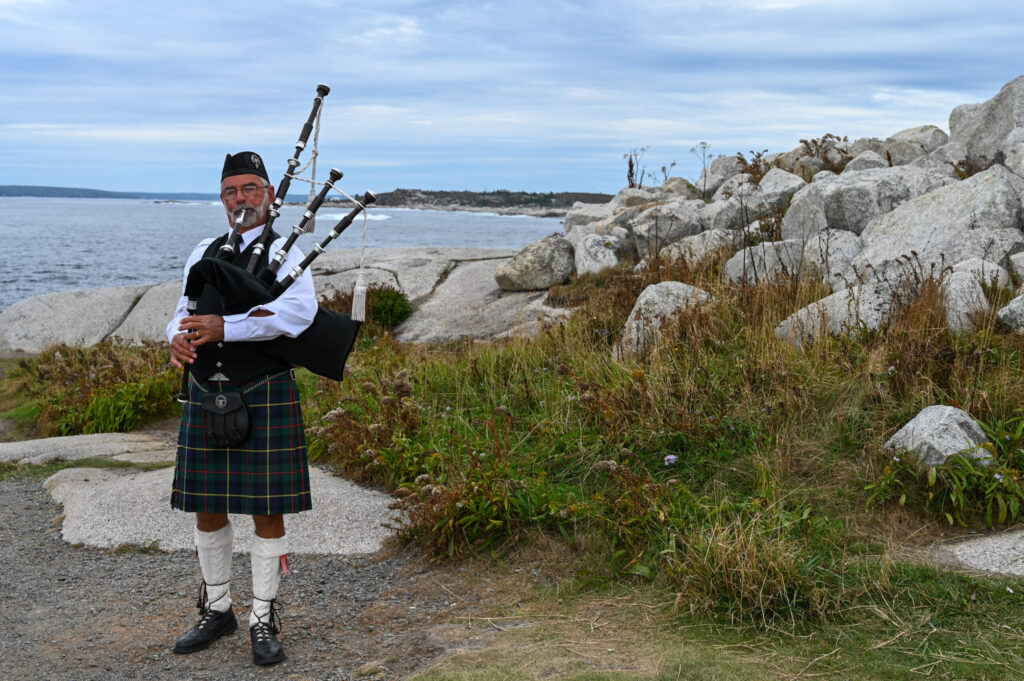


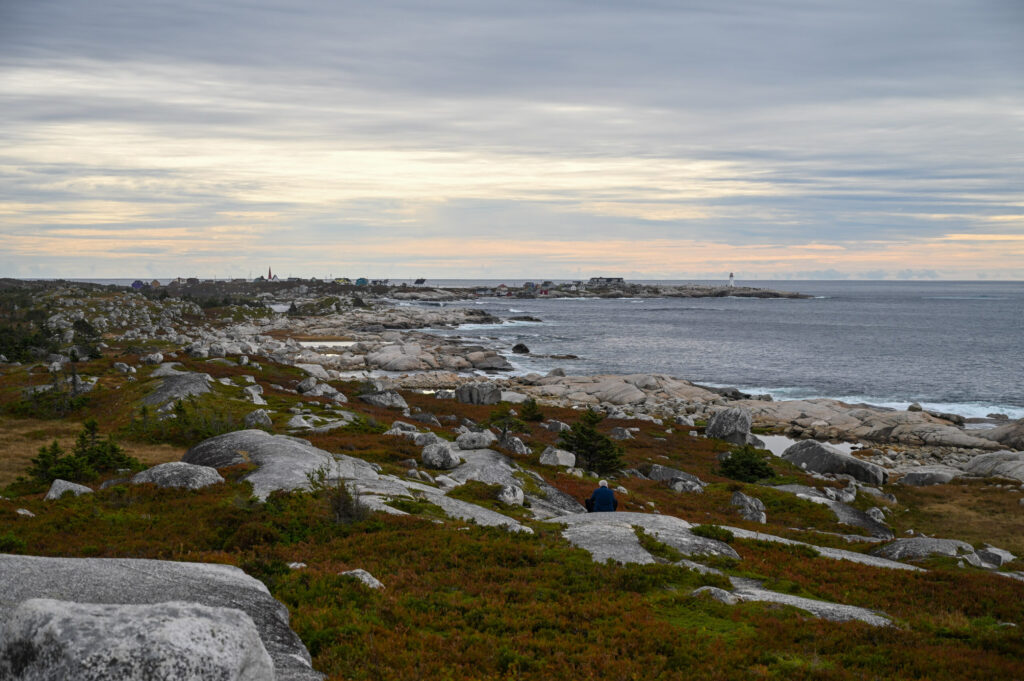



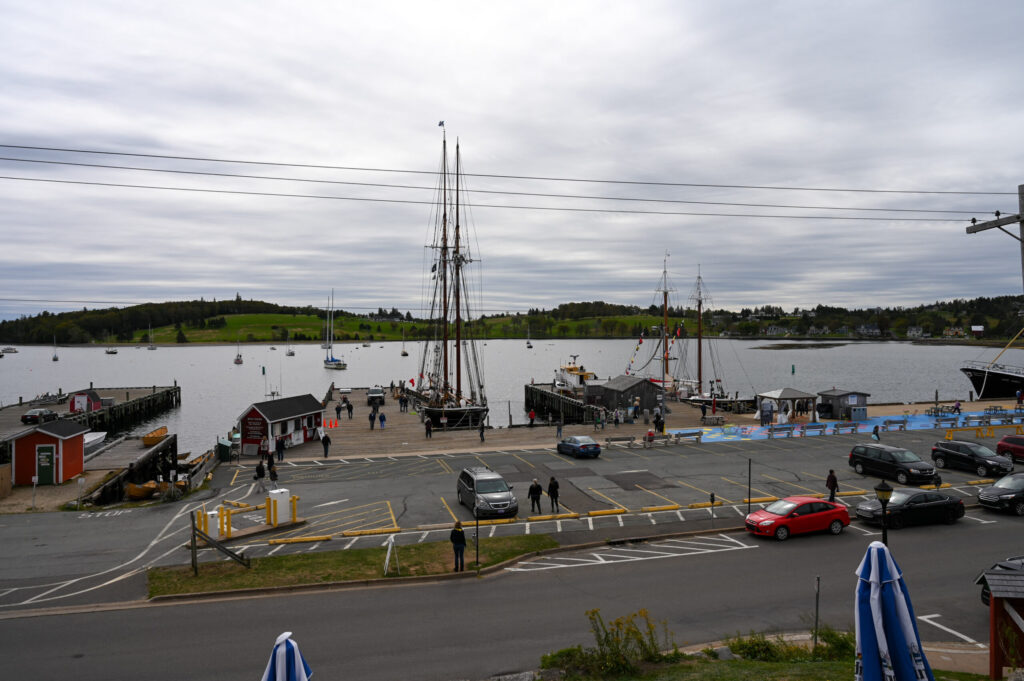


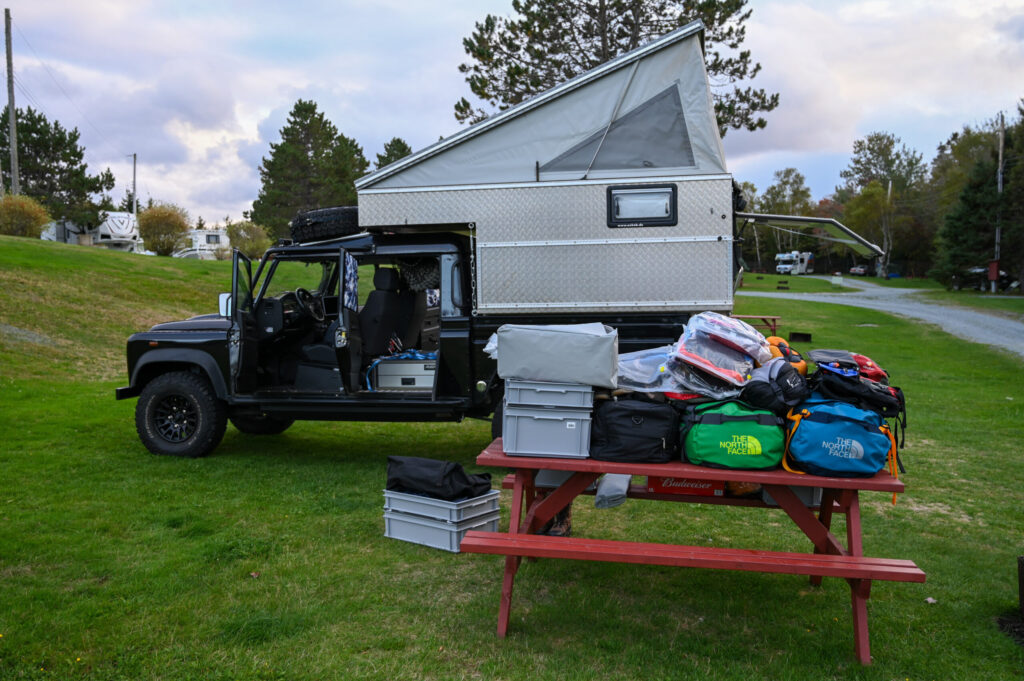
Cape Breton Highlands National Park
The next day we can finally start our journey. We drive towards Cape Breton Island and want to explore Cape Breton Highlands National Park. On the way there you really feel like you’re in the Scottish Highlands. The settlers did not name Nova Scotia nova Scotia for nothing. It is hilly and green (the forests have not yet discoloured) and the wild coastal landscape forms a beautiful contrast to the crystal clear lakes and extensive forests. If you take the numerous hiking trails under your feet, you can enjoy spectacular views of the sea. Pure nature… Of course, a whisky distillery must not be missing. Glenville is home to the tiny Glenora Distillery, the only distillery outside Scotland that produces single malt. On the tour you will learn interesting facts about the origins of the distillery. Under no circumstances should you miss the adjoining restaurant.



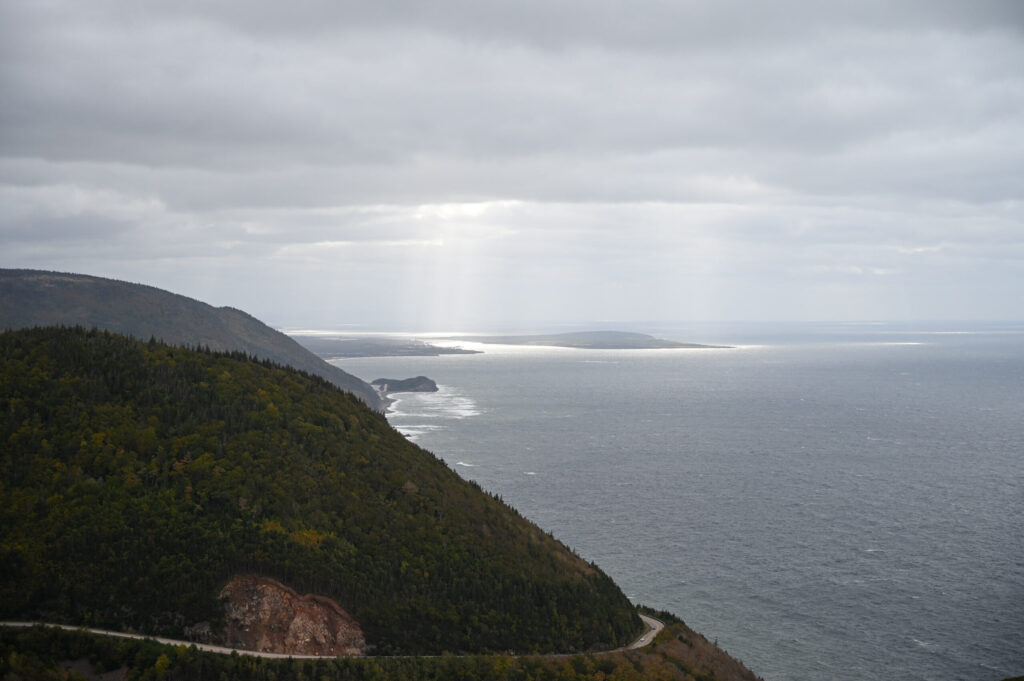
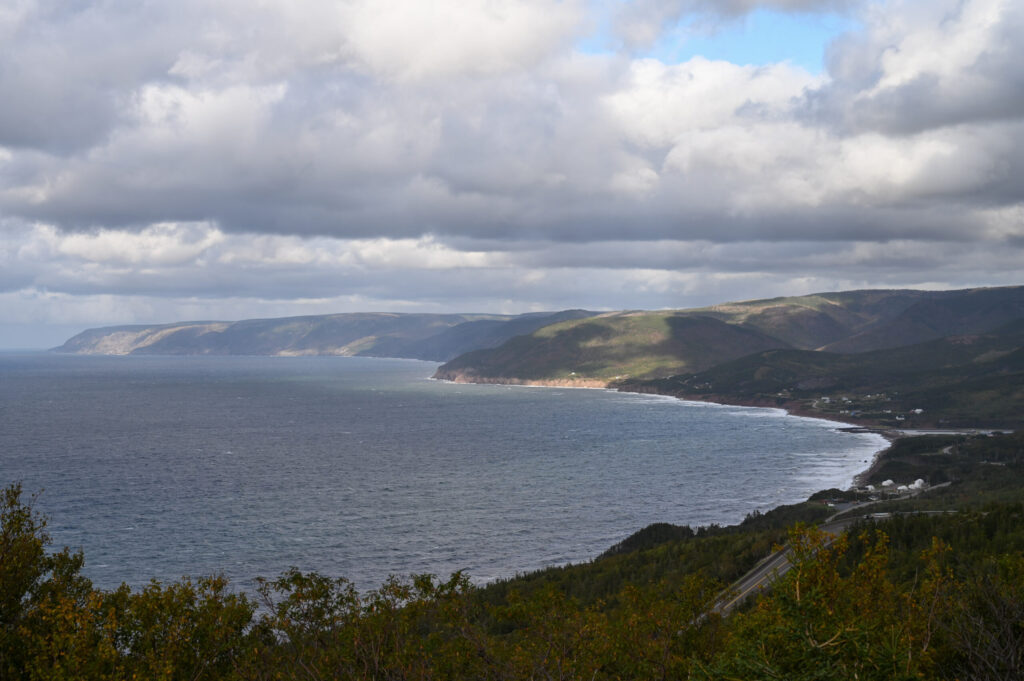





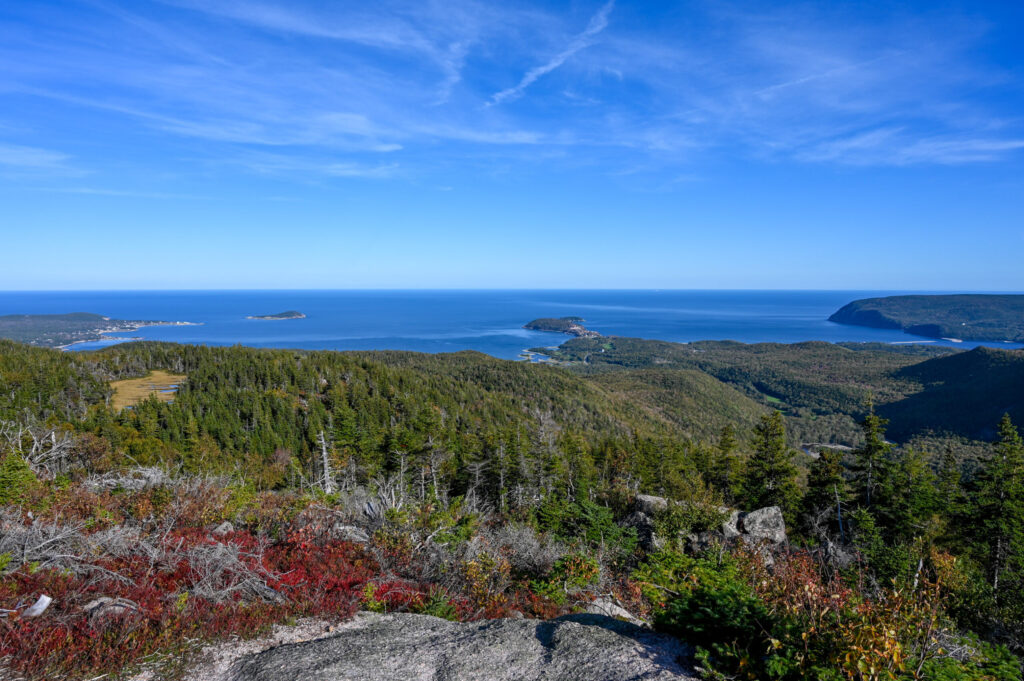
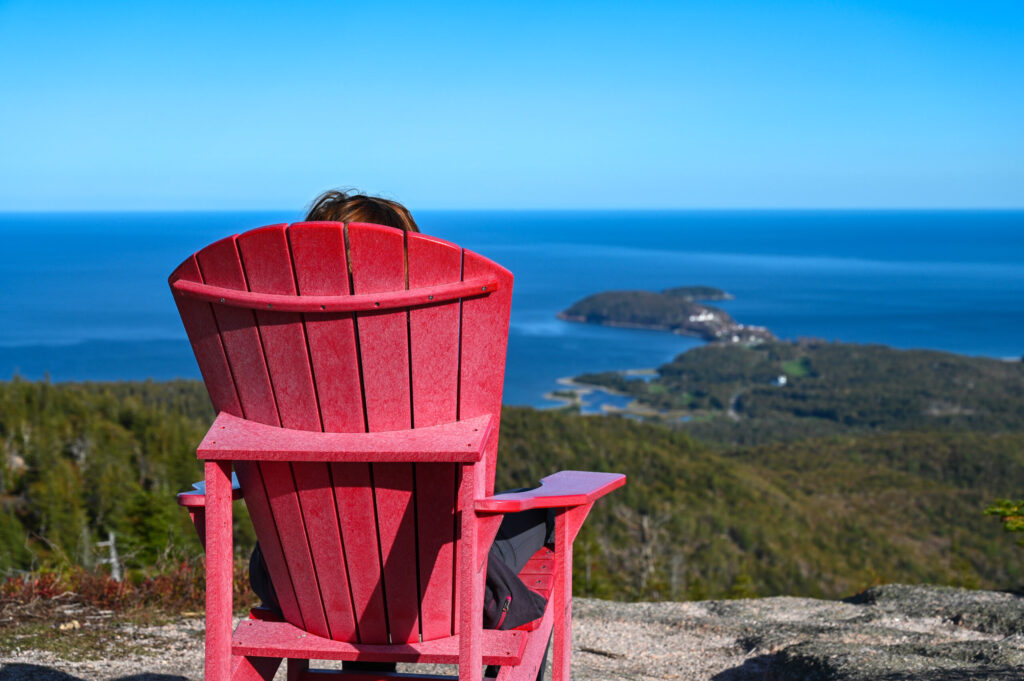
Another highlight on Cape Breton Island is the fortress in Louisbourg. Built by the French in the 18th century, the city was destroyed twice by the English, as its location was chosen tactically more than clumsily. The city was designed to be designed to be its main defense for an attack from the sea. Unfortunately, the city’s founders forgot that the city was deep in the middle of two hills and was easy to attack from the higher ground. Well, the rest is history… Louisbourg is built as an open-air museum. You can watch French soldiers shooting or visit a household with stylish servants. In addition, there are all sorts of other crafts as well as the entire fortress to admire.


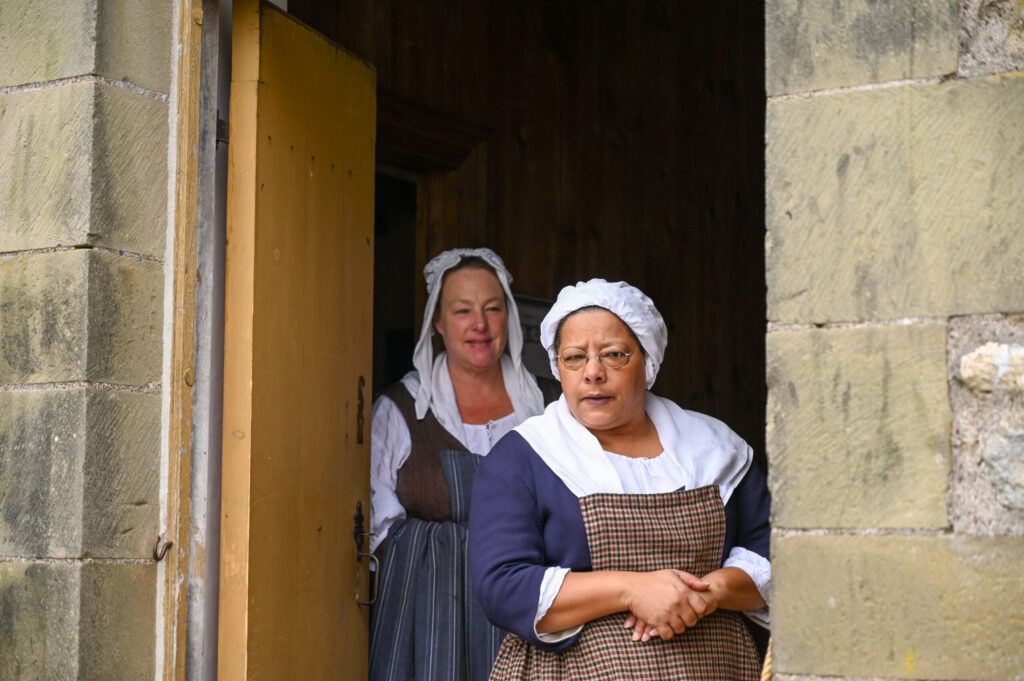

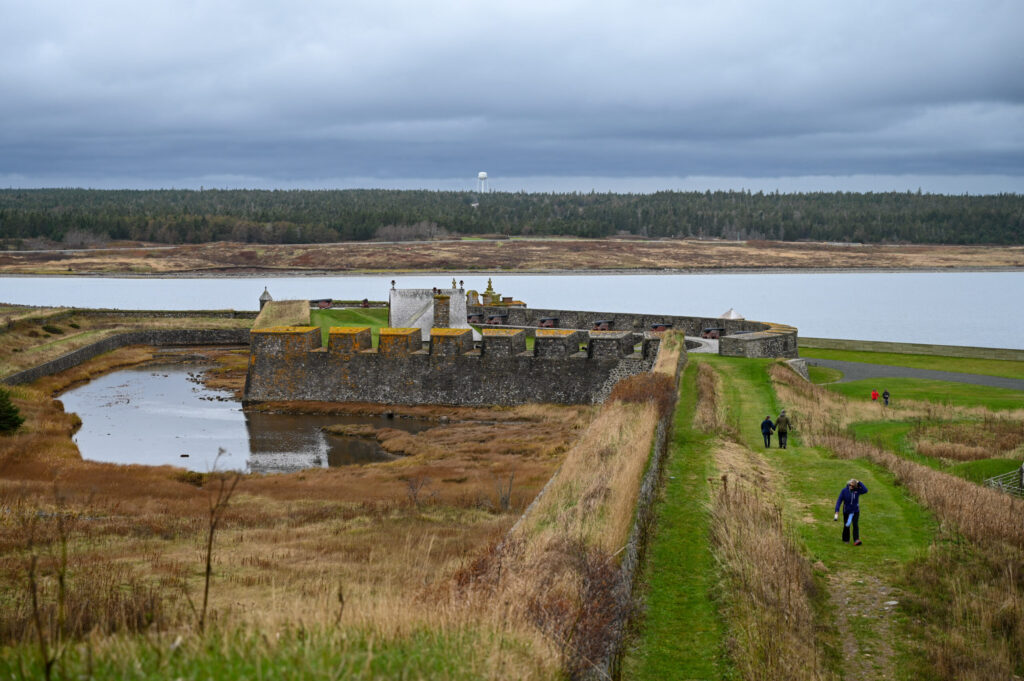
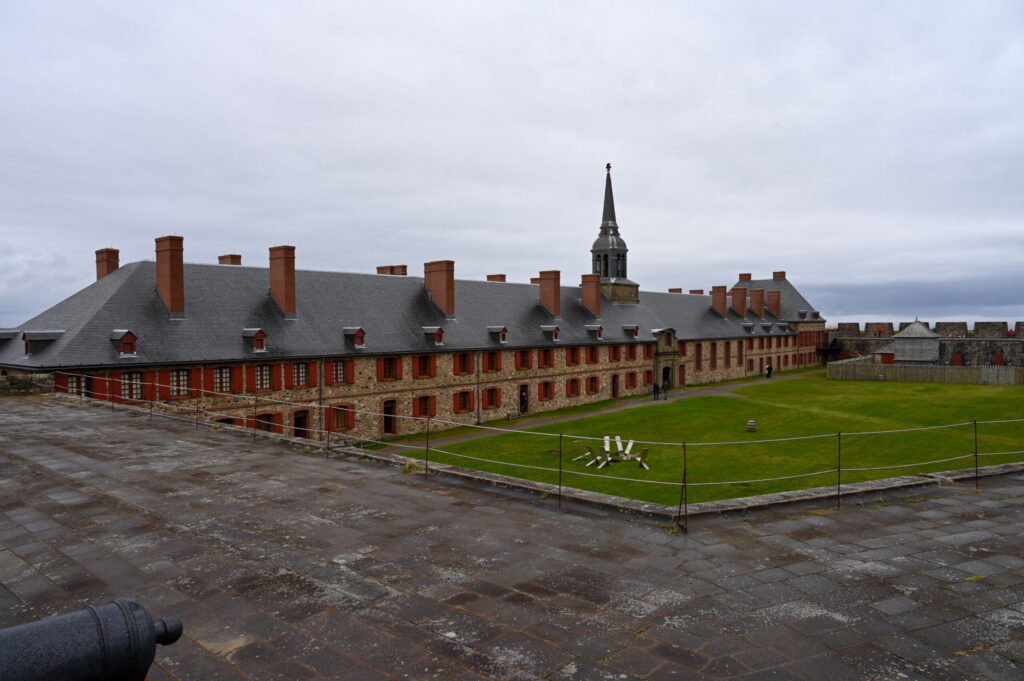
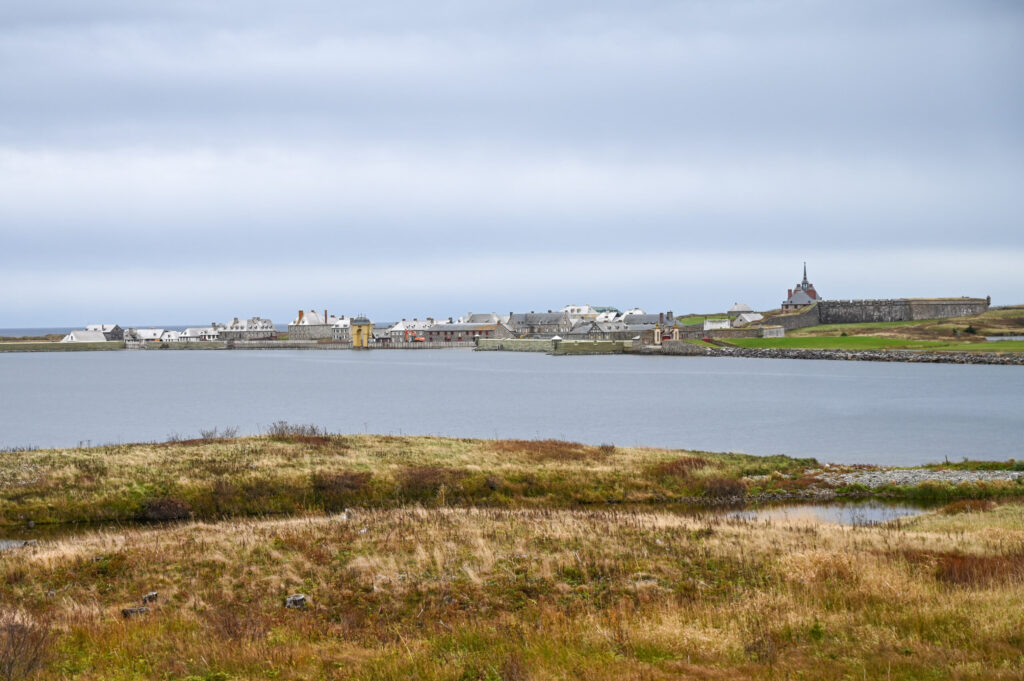


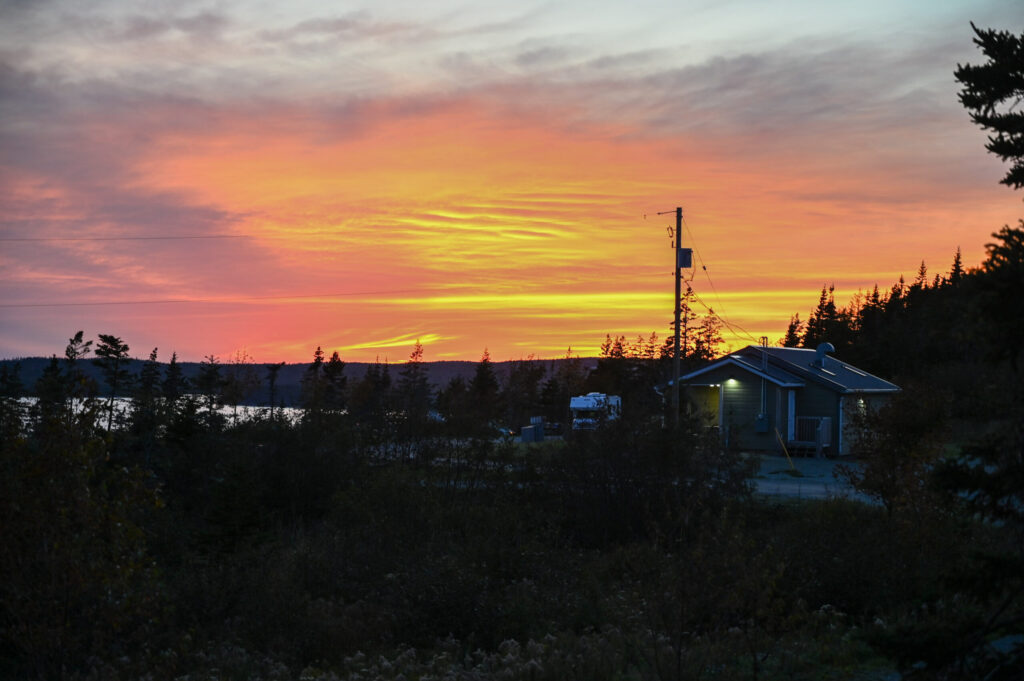
Bay of Fundy and Joggins Fossils Cliff
Over the beautiful Battery Provincial Park on Bras d’Or Lake we drive to Five Islands on the Bay of Fundy to experience the world’s largest tidal lift, which can supposedly reach up to 21 m (usually between 12 and 16 m). When we arrive, there is not much to see of water. Our pitch is slightly elevated. Two steps lead to the lower level, which is quite muddy and is a kind of jetty. We put on our rubber boots and wade out a good bit on the seabed (!). When it gets dim, we return and eat z’Night. What a surprise when we look out at about 22:00 and the water reaches up to the small jetty, where we walked around a good 6 hours ago! Madness! How fast the water actually flows into the bay, we can observe the next morning at the stand. Fascinating! Since the bay is also famous for its fossil finds, we visit the Joggins Fossils Cliff, a UNESCO World Heritage Site, and take the 1/2 hour tour on the beach. The museum and the tour were very informative and we could admire the fossils directly at the stand. Of course, this can only be done at low tide.
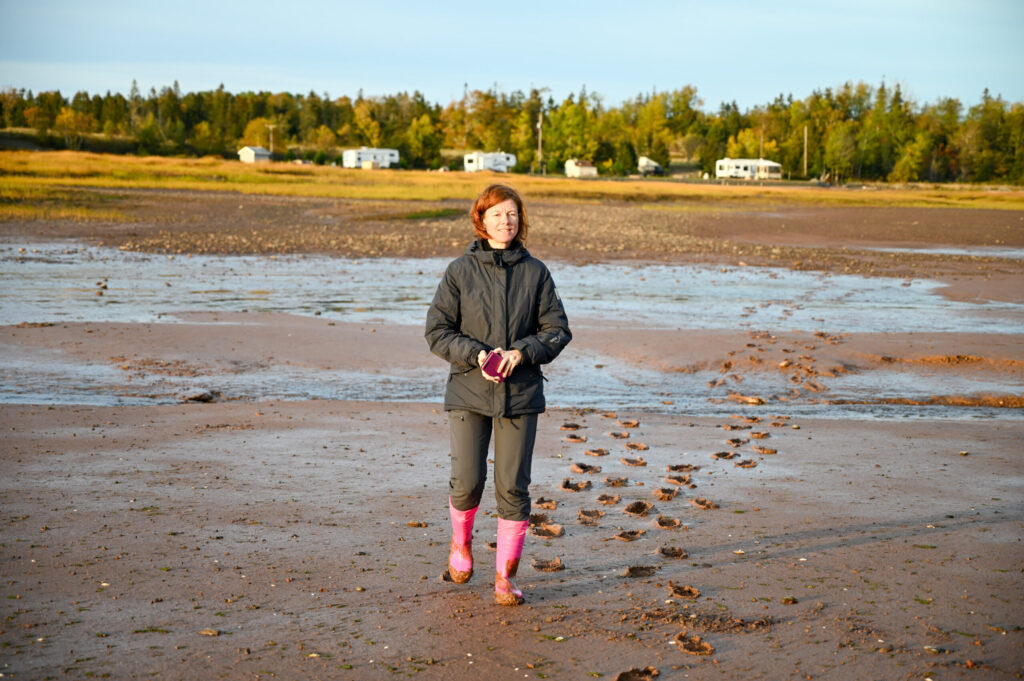




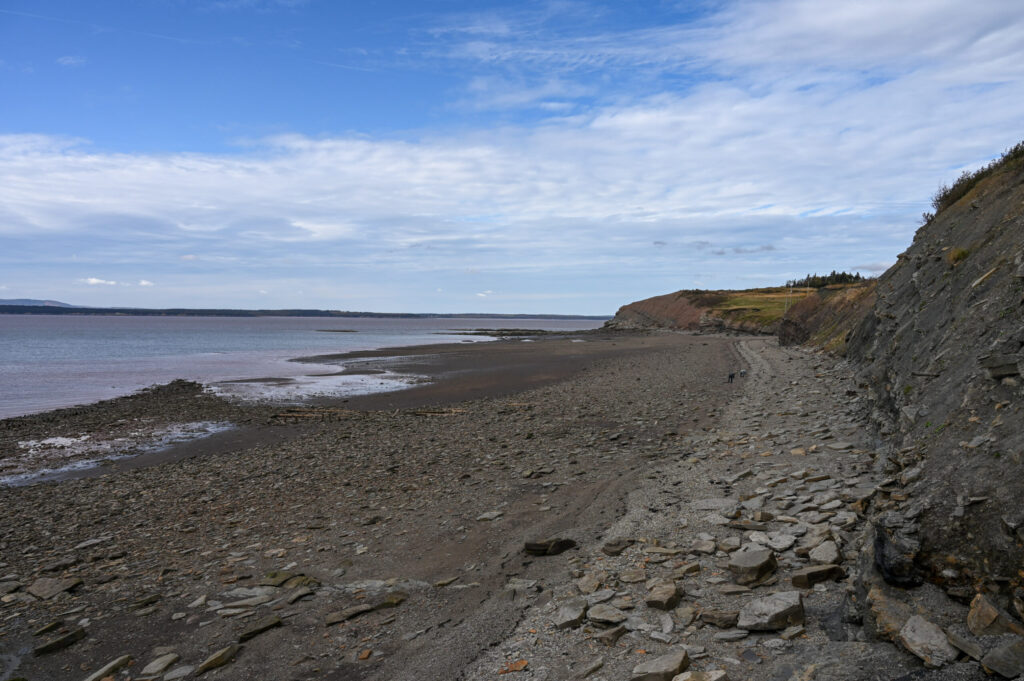
Routes des Navigateurs
The weather shows from its very wet side and so we drive in one piece through the province of New Brunswick until we arrive in the province of Quebec. In the first tourist office we inform ourselves what we can discover at this time of year. Actually we want to observe whales in Tadoussac. Unfortunately, it is too late for that. So we decide to drive along the St. Lawrence River to Quebec City. We start in Riviére-du-Loup and discover the “Routes des Navigateurs”. This route leads along the St. Lawrence River through pretty little villages and beautiful landscapes. In Kamouraska we stop spontaneously in bright autumn weather and inform ourselves about the region at the local tourist office. The nice lady explains to us that today there is a kind of course through the village shops and there is a small competition. You have to get a stamp in every participating store and get something to try. So we make our way through the village’s cuisine armed with the stamp card. We will also take some of the offered delicacies with us. You can see that we are in a French-influenced province. The foods offered are more in line with the European-French standard than the Canadian-American standard. Since it has already been quite late, we stay at a marina and try the fine things that we bought in Kamouraska.
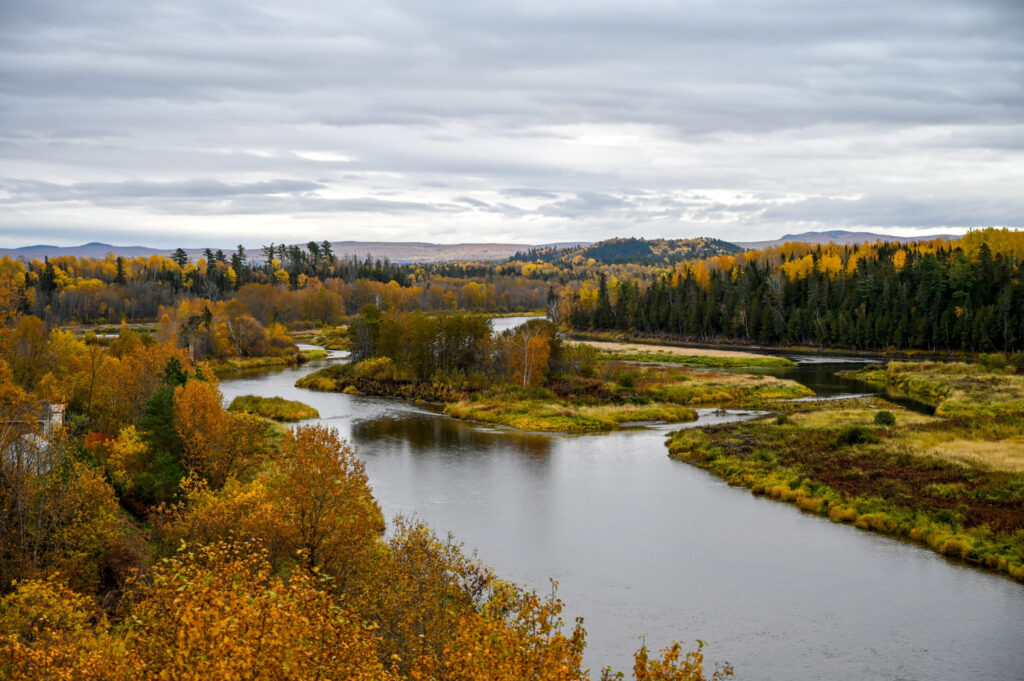



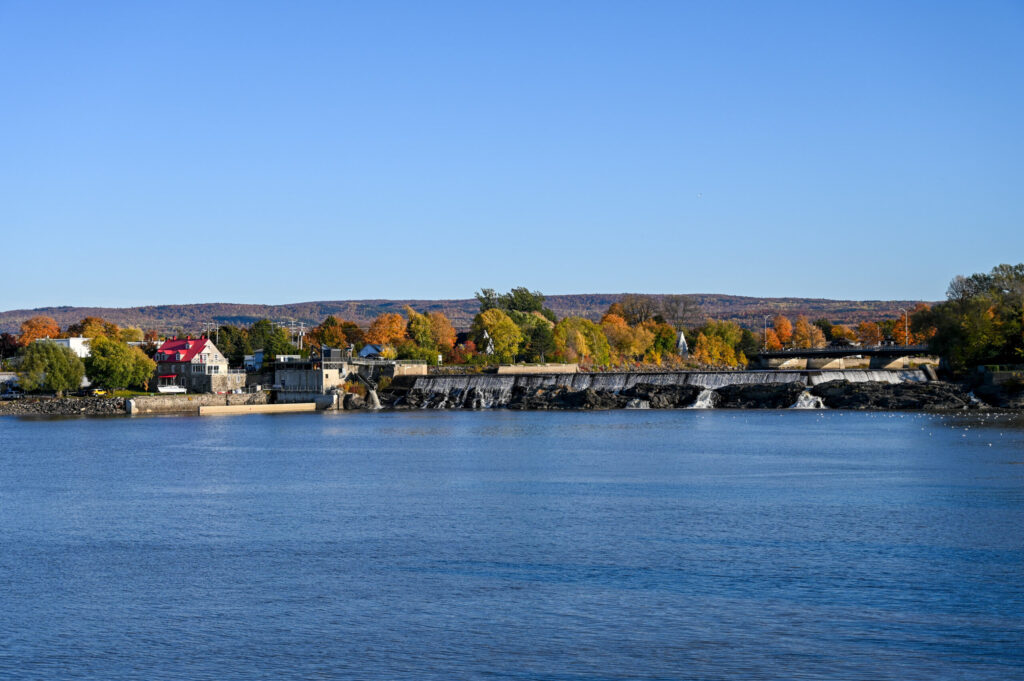

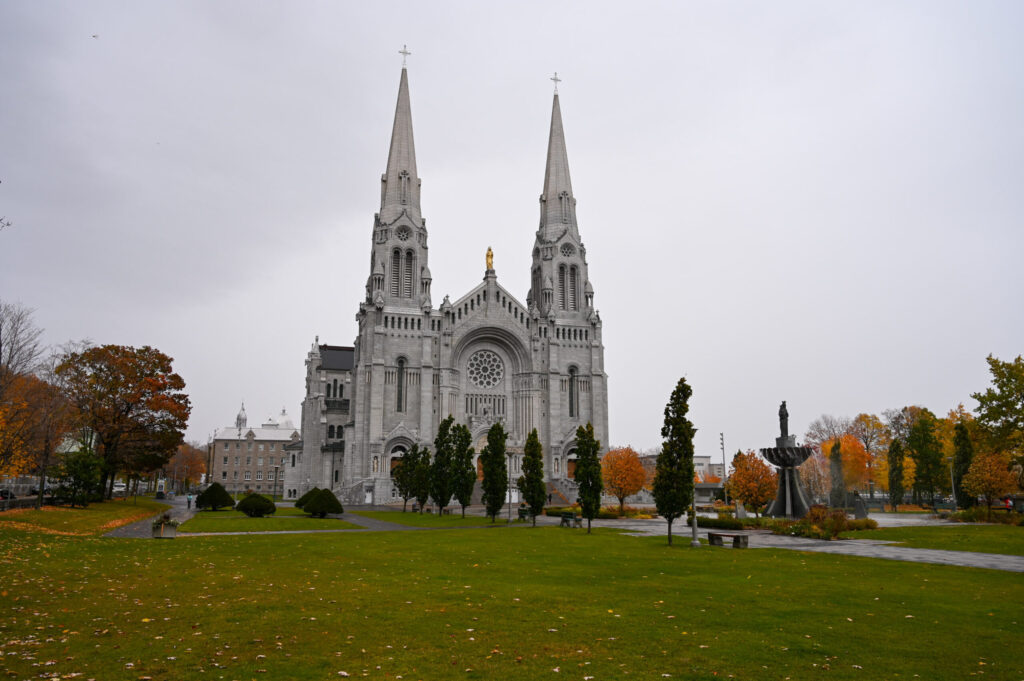
Québec
Around noon we arrive in Lévis, a village vis-a-vis of Quebec. There we treat ourselves to a BnB. The weather is nice and there are mild temperatures. Perfect for exploring the city on foot. The old city for North American conditions has a lot of charm with its winding alleys, numerous restaurants and small shops. After so much exploration, an aperitif in the famous Hotel Frontenac is of course not to be missed. For the z’Night there is even a real fondue! We love French-Canadian cuisine!
We want to learn about the natives of Canada (here called First Nations) and visit the Huron-Wendat Museum in Wendake, an outlying district of Quebec. The Wyandot settled near Quebec in the mid-17th century. They lived in so-called longhouses. These are elongated wooden buildings up to 45 m long, in which up to 60 family members lived. Depending on the size of a longhouse, several fires burned to heat the house. Although air holes were embedded in the roof, the air quality in these houses was so poor that the Wyandot sat out on average only 30 years old. After the first settlers arrived, the Wyandot also built houses in European style, which increased the average age to 79!
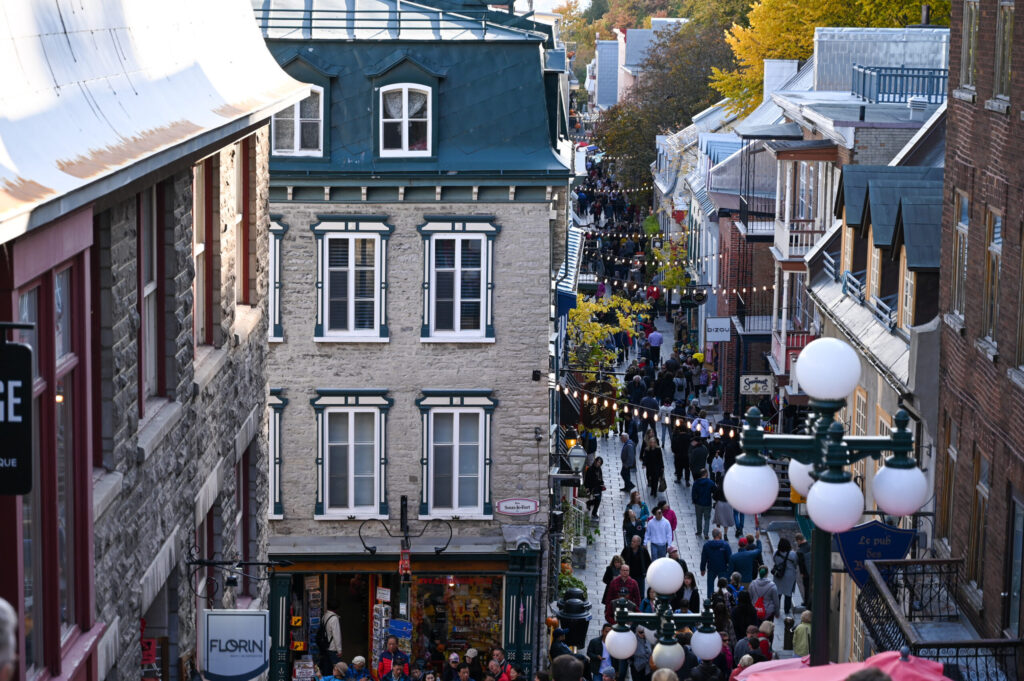
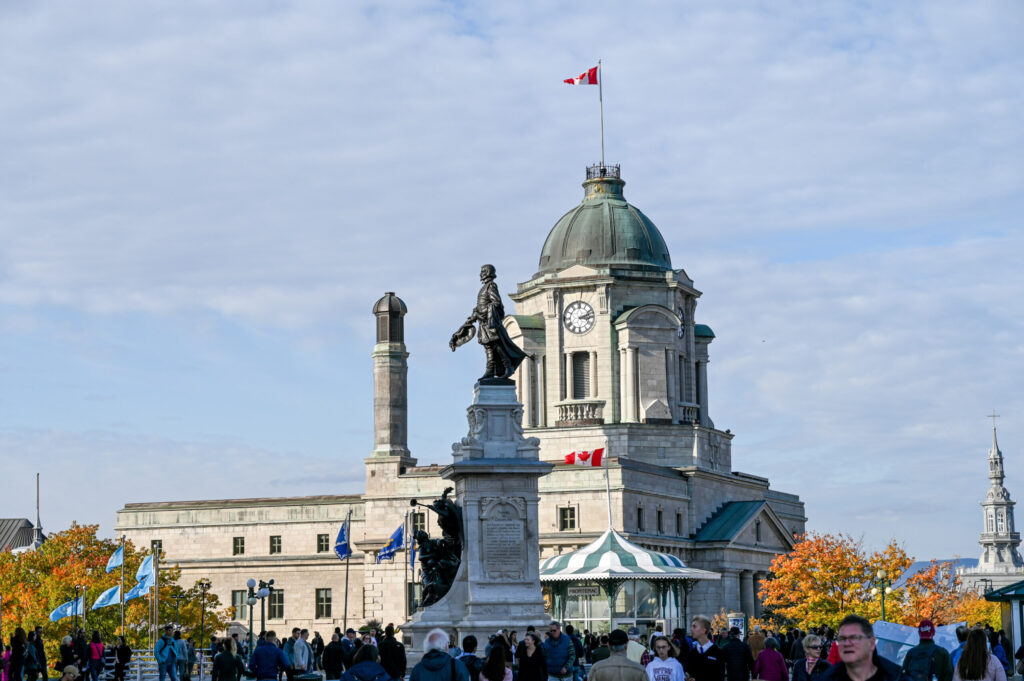
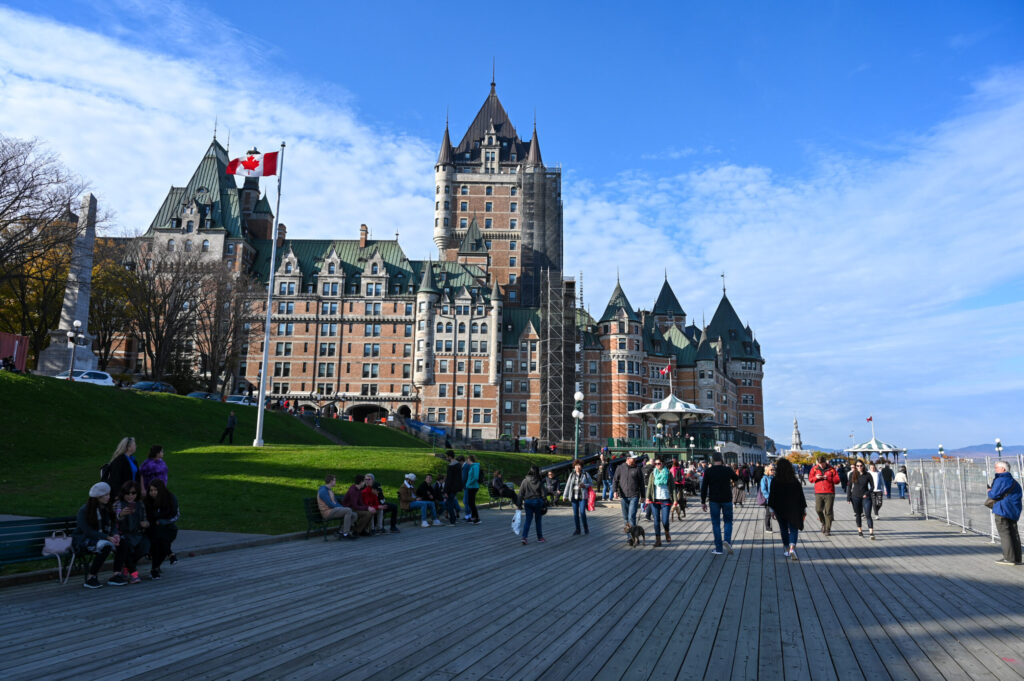
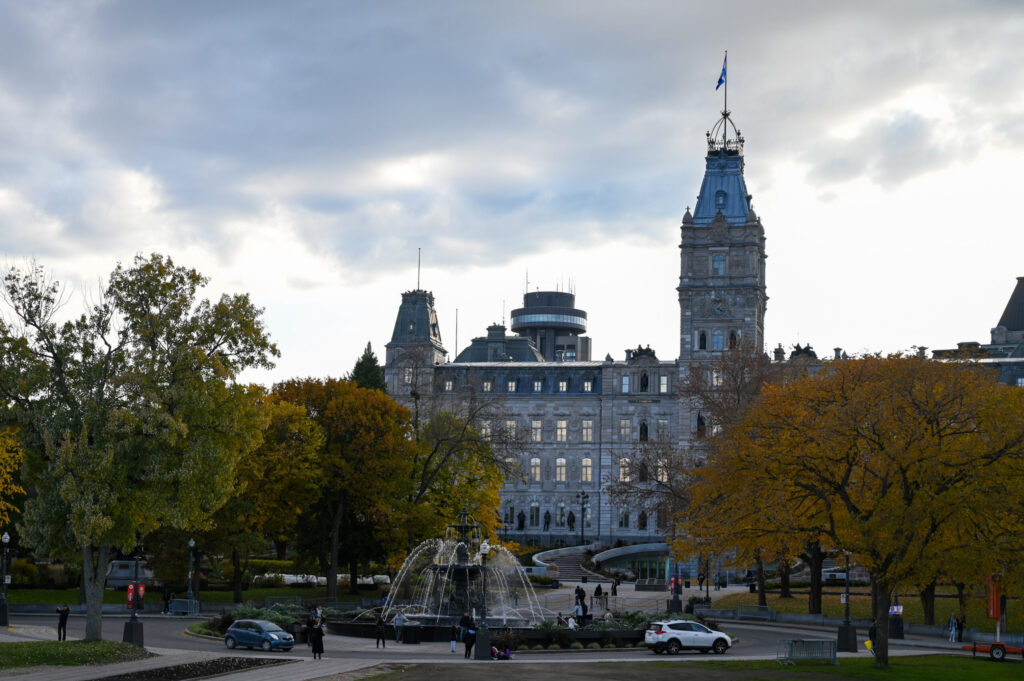


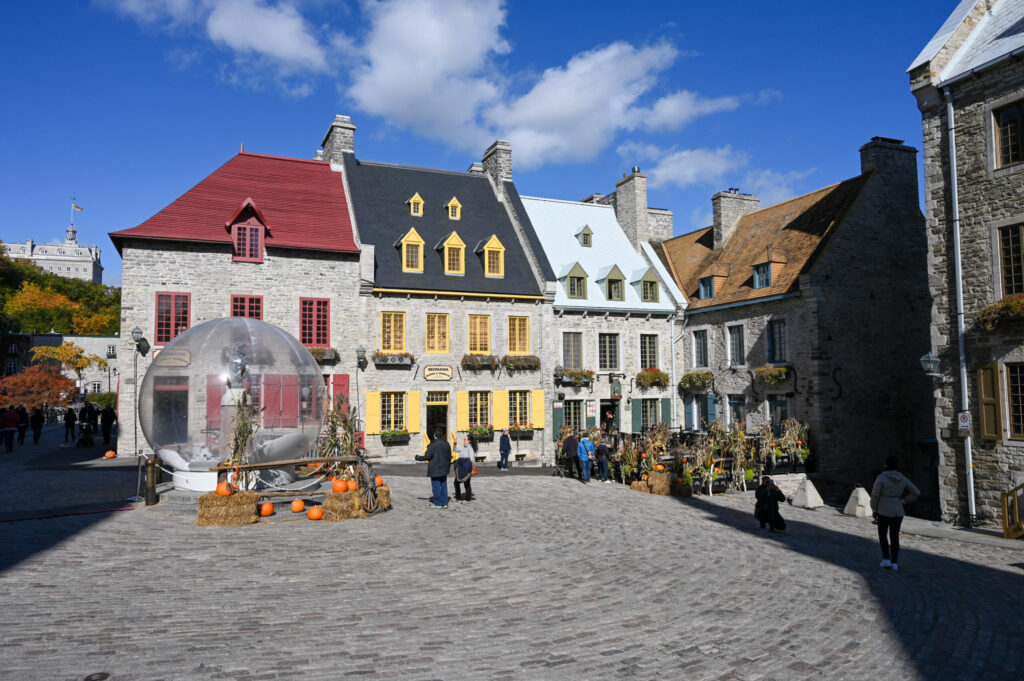
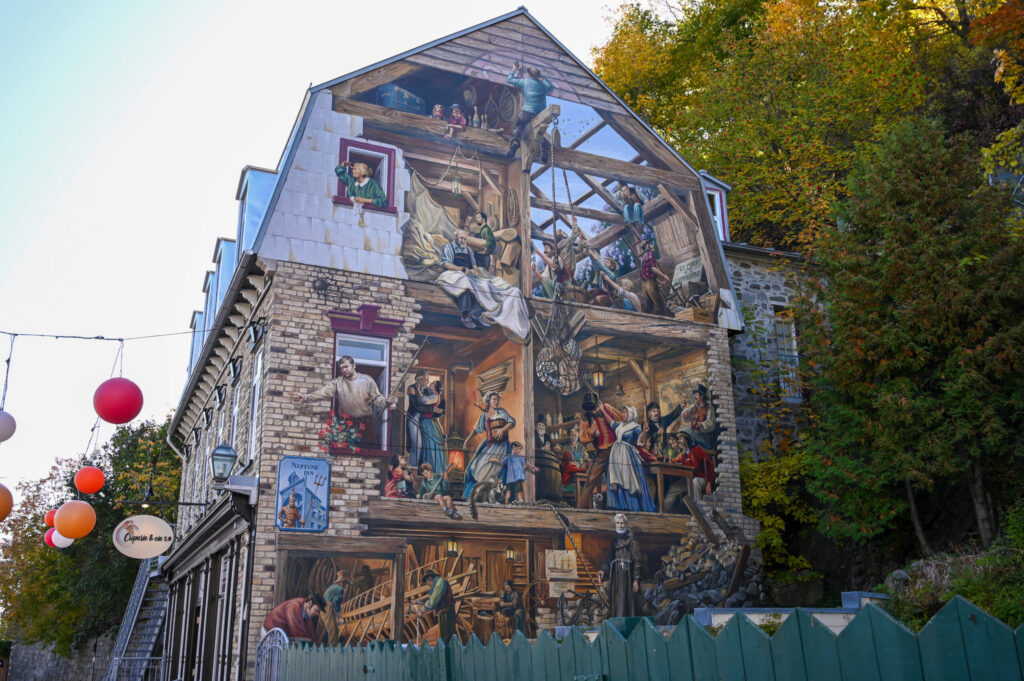
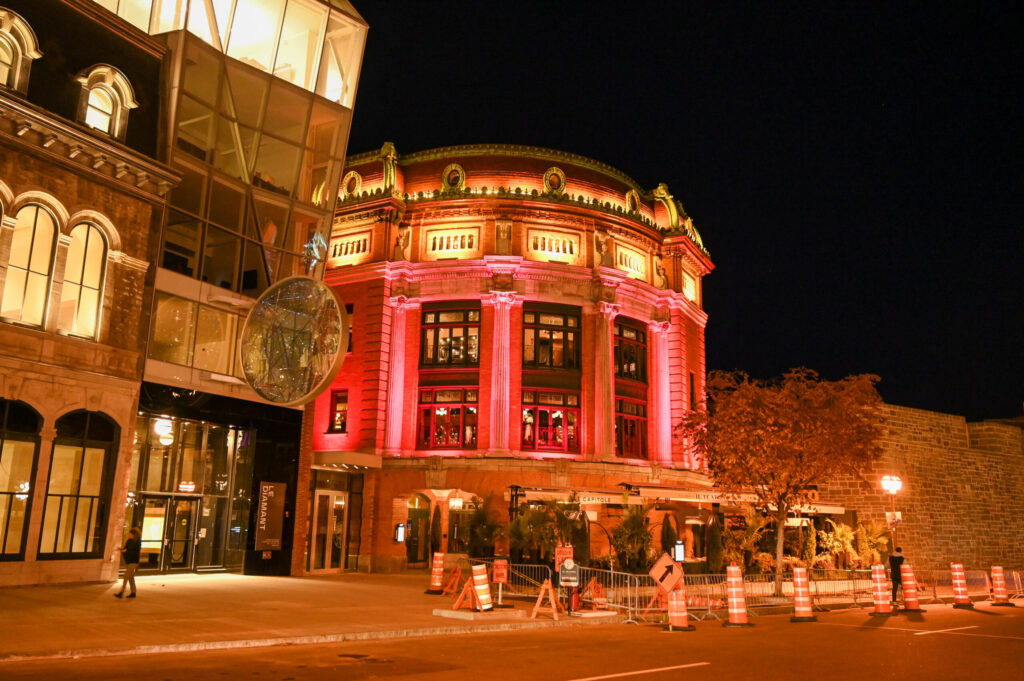
Cinq à sept in Contrecoeur
The Frankokanadier are funny people. Once again in search of a parking space along the routes of the Navigateur we pass Contrecoeur. Since the tourist information at this time of year closes everywhere at 17:00, we drive to this small house, which is also a museum, just before 17:00. It is somewhat unusual that so many people come in and out. After all, it is also a museum… let us think of ourselves. When there is also beer and wine to buy at the entrance, we are completely confused. With our rather modest knowledge of French, we learn that this is already the tourist office, but not right now. At this time of year, the cinq sept always takes place on Fridays, an open event between five and seven evenings with music and something to drink. There is a nice gentleman who speaks English and invites us. We can leave our camper in the public parking lot.
It is a nice evening and of course there has been talk that two Swiss are among the visitors. Before the event is over, we have already received two invitations to dinner. According to the motto “First come, first served” we accept the first invitation. The gentleman who invited us was city manager of the city for 24 years (similar to a municipal clerk) and the man from the entrance is a member of the city council! It will be a very enjoyable evening to eight with pizza and beer.
Montréal
In sunshine and cloudless skies we visit Montréal. First you go up to the mont royal city park, from where you have a beautiful view over the city. The forest surrounding the park glows in the most beautiful autumn colours.
From the highest point of the city, it goes across Montreal to the Waterfront, which is probably populated by millions of people during the season. In autumn there are only a few tourists on the way and so we can look at everything in peace. Only the restaurants there are closed. There’s plenty of that nearby, including a Secret Bar. When we are granted admission after the registration procedure, we are no longer sure whether the bar is so secret. It’s full of people. The ambience and drinks are quite good and the concept seems to work.

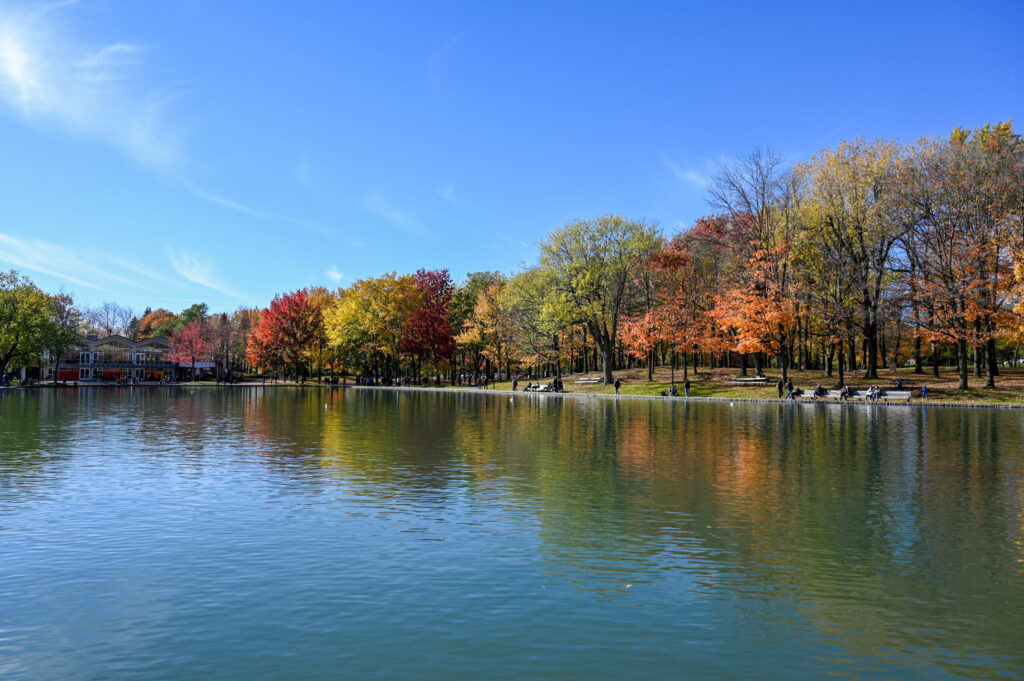



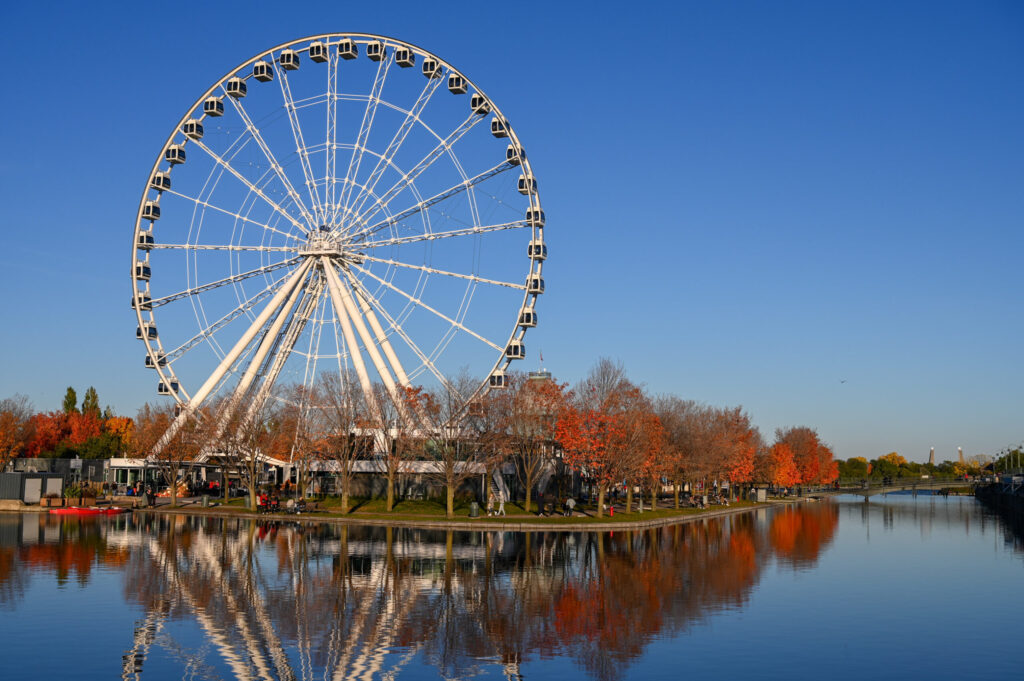
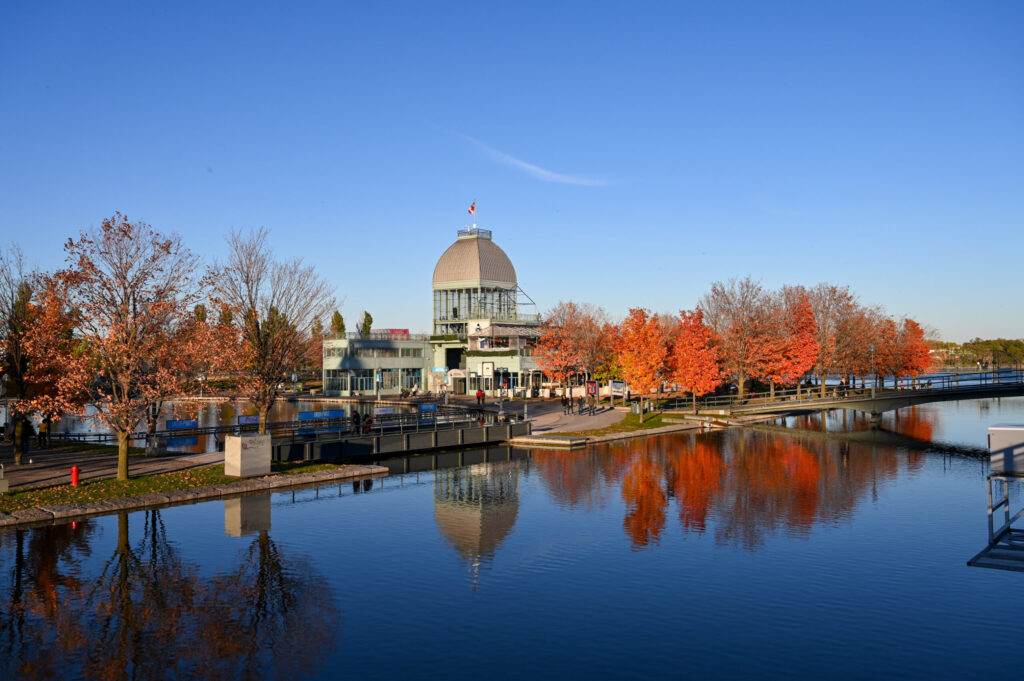
Niagara Falls
We leave Toronto to the left and take the Niagara Parkway to Niagara Falls. This path is worthwhile, because it is lined with wineries and deciduous trees, some of which still carry their coloured foliage. Together with the sun a beautiful scenery.
Just in time for sunset we can admire the waterfalls for the first time. They are quite impressive. Cool is the night lighting when the water masses glow in all possible colors. Don’t miss the sunrise. In any case, the waterfalls are more beautiful from the Canadian side than on the American side. A nice finish before we cross the border with the USA.
